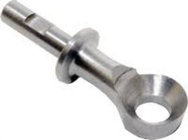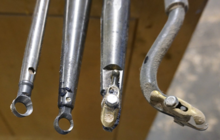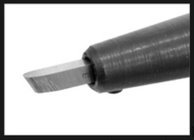The John Jordon tool shafts I have may work especially the 3/4" tool as it has the tapered end. I have a sharpening stone and will try it mounted in a die grinder like Al Hockenbery has suggested. I am going to buy the larger termite tool and see if it works with the JJ tools I have.
Assuming that the ring tool will fit into the JJ tool handle you still need a free hand tool handle to be able to turn the ring for the proper orientation.
hanks everyone for sharing your experiences here. I may try a hook tool at some point in the future too.
Al
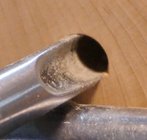
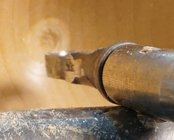
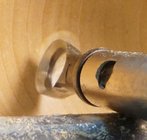
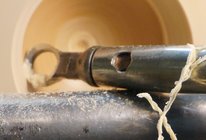
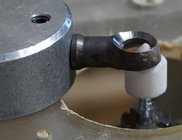
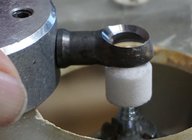
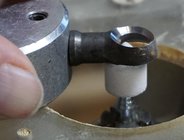
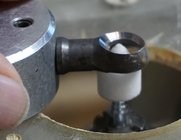
The 8 pictures should illustrate how to use the ring tool and the best way to sharpen. The wood in this case is birch end grain and the tool mounted to the standard handle.
Pic #1 making a starting hole with a detail/spindle gouge working like a spoon bit, but what isn't shown is enlarging the hole by back cutting.
Pic #2 is the absolute worst presentation, which would almost certainly guarantee a nasty catch.
Pic #3 & 4 show the proper presentation so if the handle is at 6:00 o'clock the actual cut is at 10 to 11: o'clock. The best analogy is to think of the the ring tool as a gouge with the handle at 90 degrees to a normal gouge. The cutting of the reverse half sphere of about 2" diameter took about a half minute and has a surface that would require very little sanding starting with 320 grit sand paper. The final cut is accomplished by holding the tool to the rest with the left hand and rotating in a large radius with the right hand.
Pic #5, 6, 7 & 8 shows the proper adjustment of the stone verses the bit. The technique is to move the tip in a concentric pattern around the stone which will result in a consistently uniform grind. The grind stone should never make 360 contact.
The tool can also be used for deep hollowing where there isn't enough room to maneuver an arc such that it will start as a sheer cut then turn into a scrape between about 10:00 and 9

o o'clock and will require a stiffer handle.
I don't recommend that it be used with a captured bar hollowing system since the presentation angle usually needs to be adjusted within each cut
The best way I know of to master the use of the ring tool is to practice with something similar to what I have shown here.
The drop type hook tool will work however to start the cut in the center you need to hold the handle down to bring the hook to the center, whereas if the hook came out straight similar to the ring tool it would work much better.
